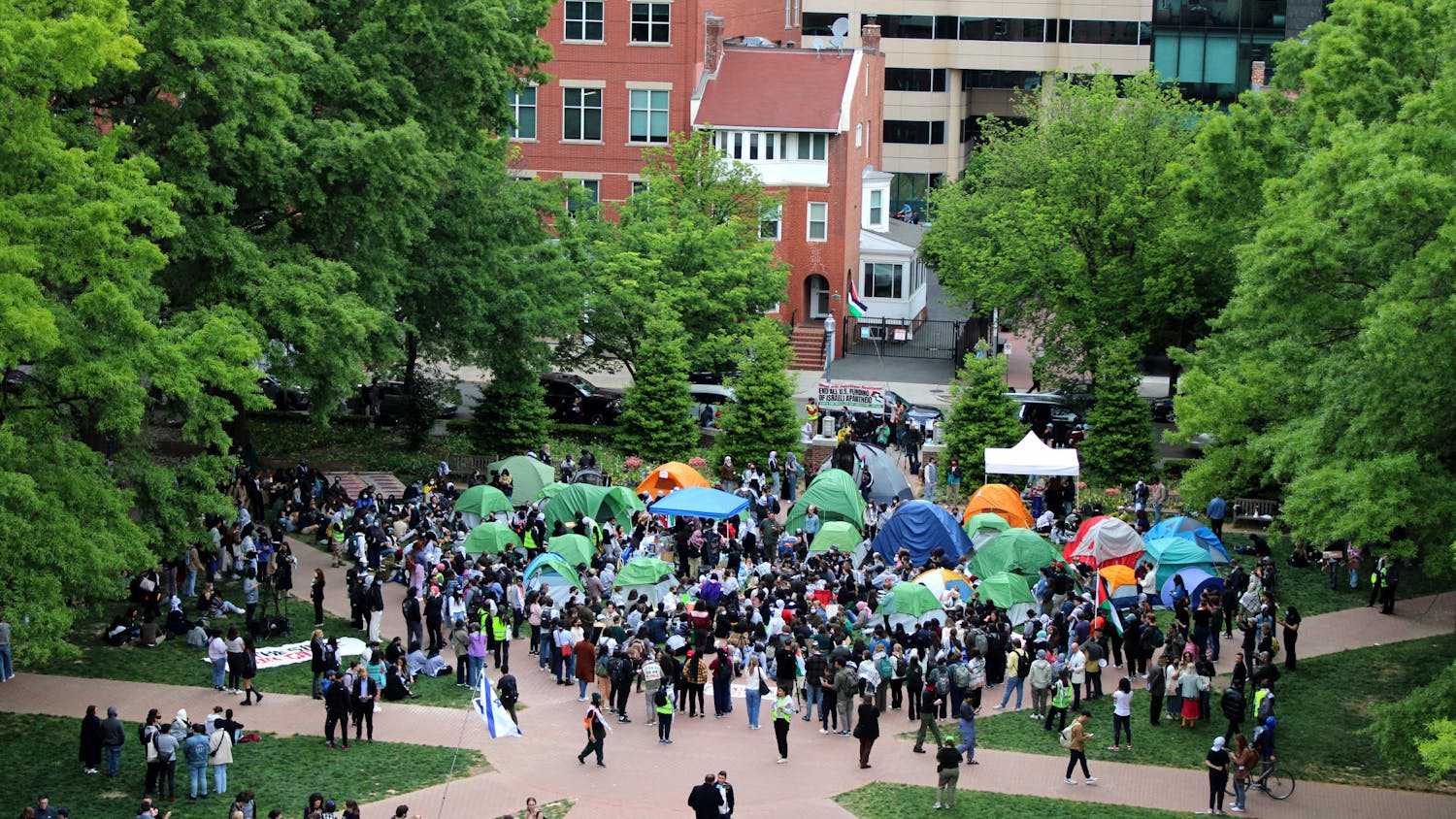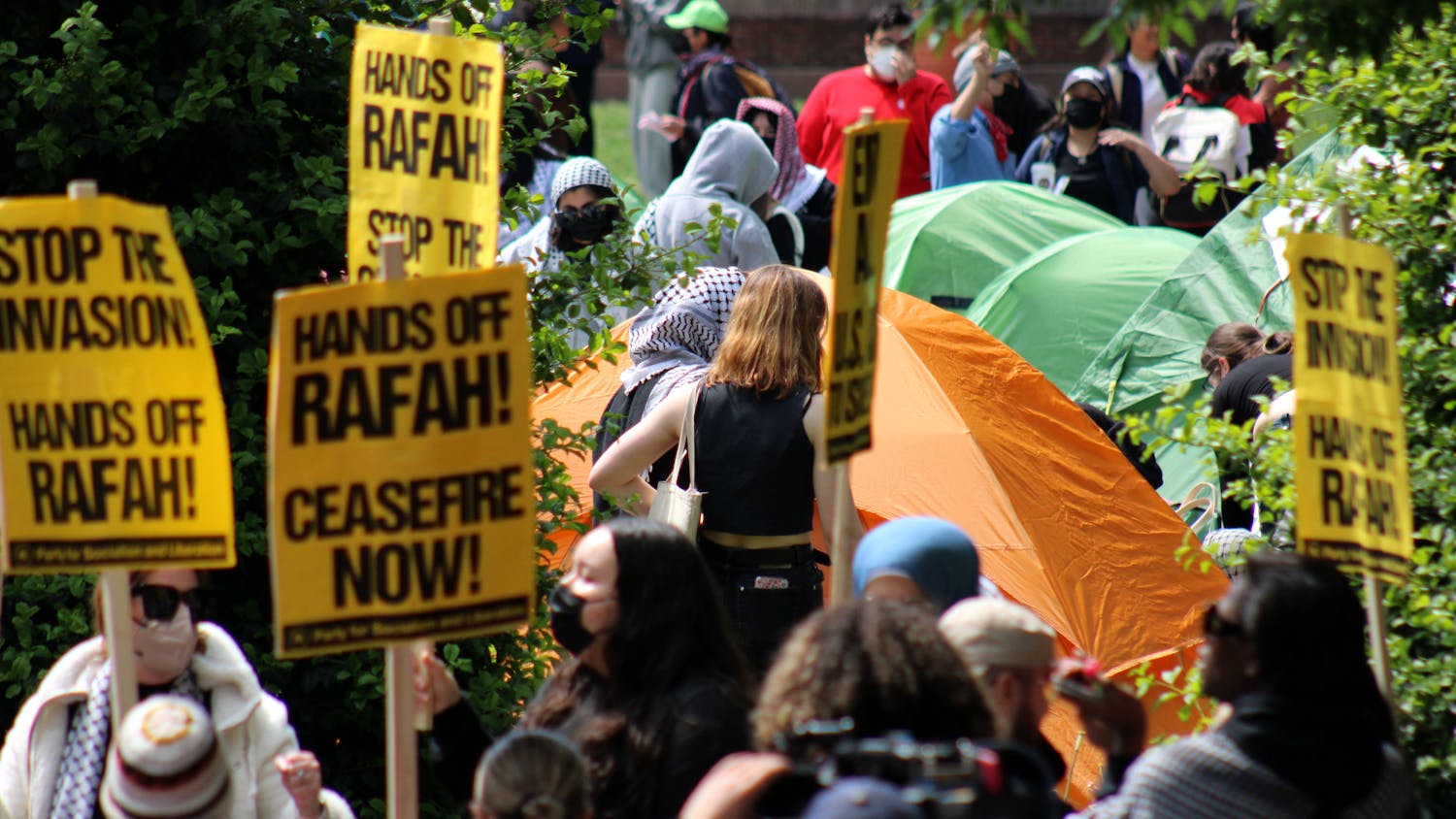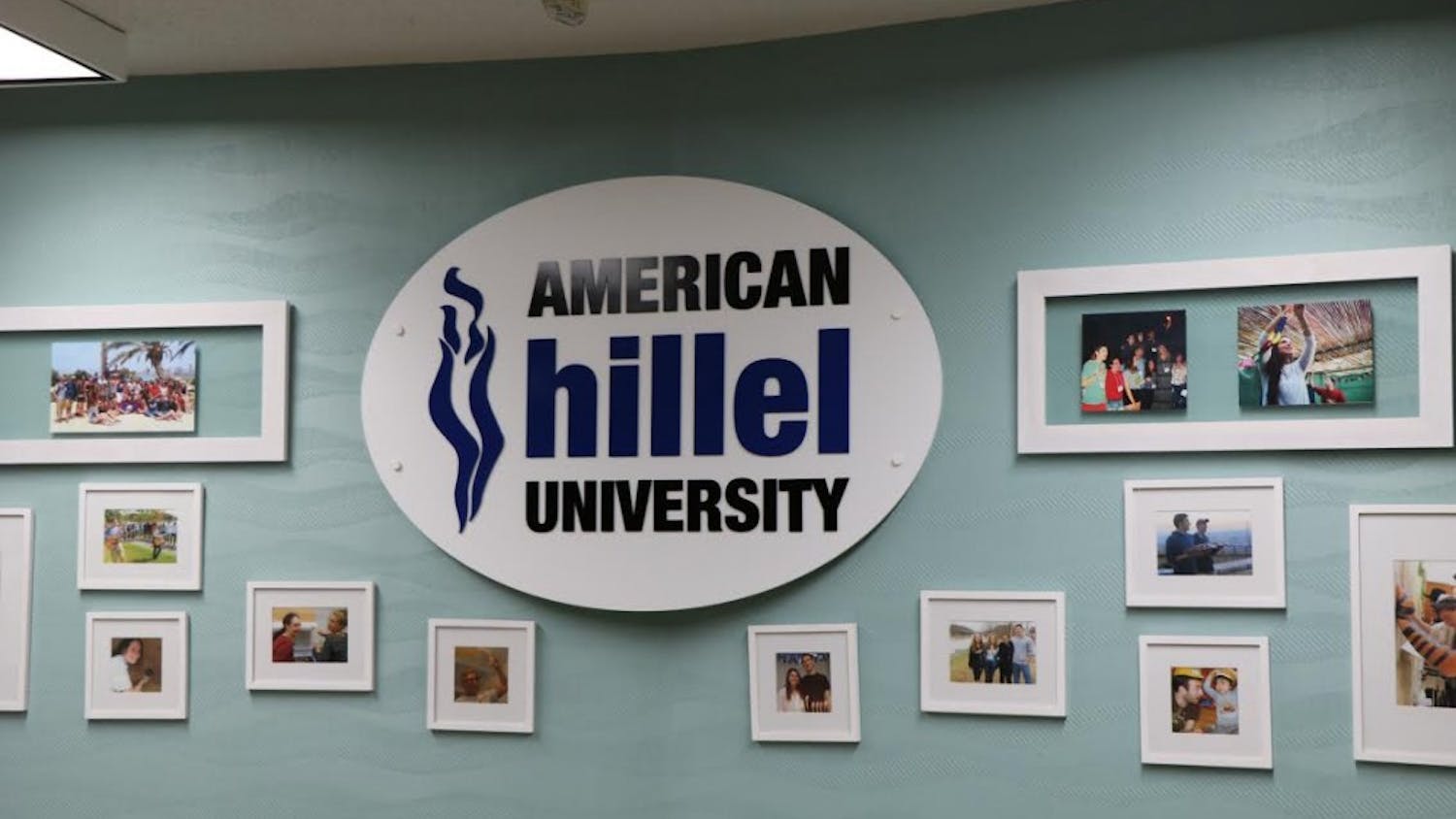The dig for World War I-era weapons buried under and around AU's campus stopped Dec. 5 because a munition recovered weeks earlier contained explosive material not described in the site's safety plan, project officials said at a Spring Valley community meeting Jan. 8.
The chemical shell, recovered Nov. 19, was almost 10.5 inches tall and 3 inches wide. The Material Assessment Review Board found the shell contained high levels of arsine gas and "energetics," or explosives including TNT, according to Dan Noble, the Spring Valley project manager for the U.S. Army Corps of Engineers and the co-chair for the Restoration Advisory Board. The explosives posed little danger because the weapon lacked a fuse.
While in storage, however, the energetics could erode the metal container, causing an arsine gas leak. The possibility of this occurring is very rare and could only happen at a federal storage site after the item has been removed from the community, Noble said in an e-mail.
Despite the lack of immediate danger, the findings required the Army Corps to alter the site's "maximum credible event" - a formal statement outlining the worst-case scenario. While the Army Corps described the original maximum credible event as "the instantaneous release of arsine from a non-explosively configured 75 mm Mark II chemical projectile," the new statement must now reflect the possibility of "explosively configured" items - shells equipped with a fuse, explosives or both, Noble said.
Formal approval of the maximum credible event is a strict procedure that requires a review by the U.S. Army Technical Center for Explosives Safety, the Department of Defense Explosives Safety Board and the Spring Valley partners, a board representing the U.S. Environmental Protection Agency, the Army Corps and the D.C. Department of Health, according to Noble.
Caution is the top issue as they continue with the project, said Ed Hughes, the program manager for the Army Corps.
"We prioritize the safety of our workers and members of the community," he said.
Out of 500 items recovered at the Spring Valley site, which includes Pit 1 and Pit 2 at 4801 Glenbrook Road and Pit 3 at the adjacent 4825 Glenbrook property, this was the second shell of its kind to be found, according to Noble.
The maximum credible event was not the only aspect of the project's safety plan to be analyzed at the meeting.
Several community members expressed concern about the audibility of siren tests conducted by the Army Corps. Several students who lived in the South side residence halls last semester claimed they were unable to hear the Nov. 7 test inside those buildings, The Eagle previously reported. However, it was not required at the time that students be able to hear the siren in their dorm rooms, and the siren was heard in the designated shelter-in-place zone.
The Army Corps decided to take the complaints seriously and raised the volume of warning sirens stationed near the site in response to discussions with AU officials, said Bernard Schulz, special assistant to the vice president of Campus Life.
Some community members also said they were uneasy about the plan to use Bender Arena as a safety shelter during an emergency because it is situated in a low-lying area where airborne chemicals could concentrate.
Schulz said Bender Arena is a safe distance from the digging site. People in areas of the campus far away from Bender, such as the Ward building, should shelter in place or seek a nearby building, he said.
The project was supposed to last 14 weeks, but the Army Corps only completed four weeks of work before digging ceased. Noble said he hoped the Army Corps would hear from the reviewing bodies within a week of the meeting.
"My hope is that we get back to work this month," he said.
As of press time yesterday, the Army Corps had not resumed work at the site, according to Carolyn Jackson, chief of public affairs for the Corps' Baltimore district.




